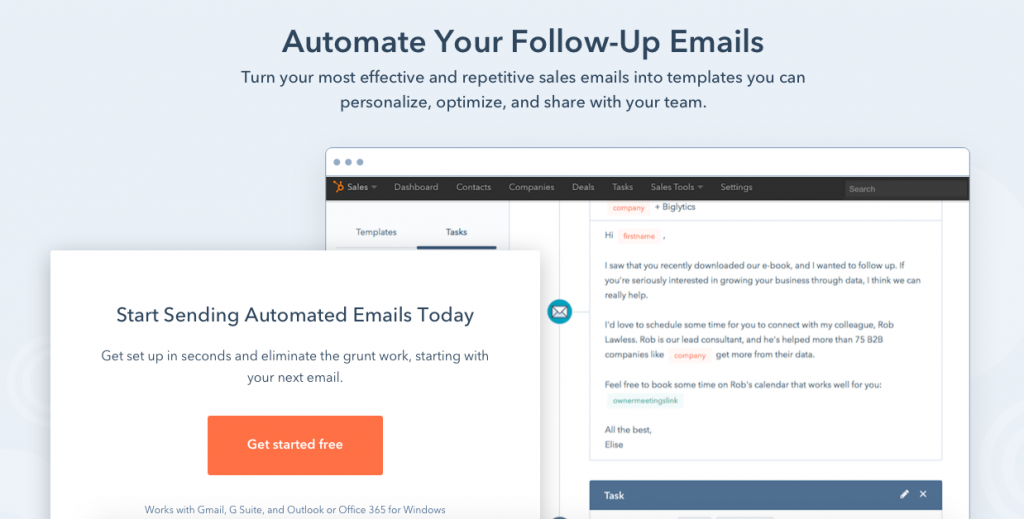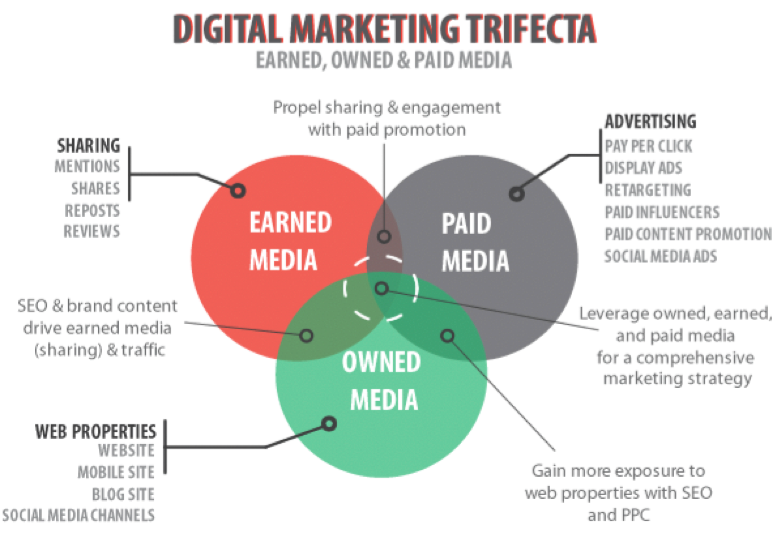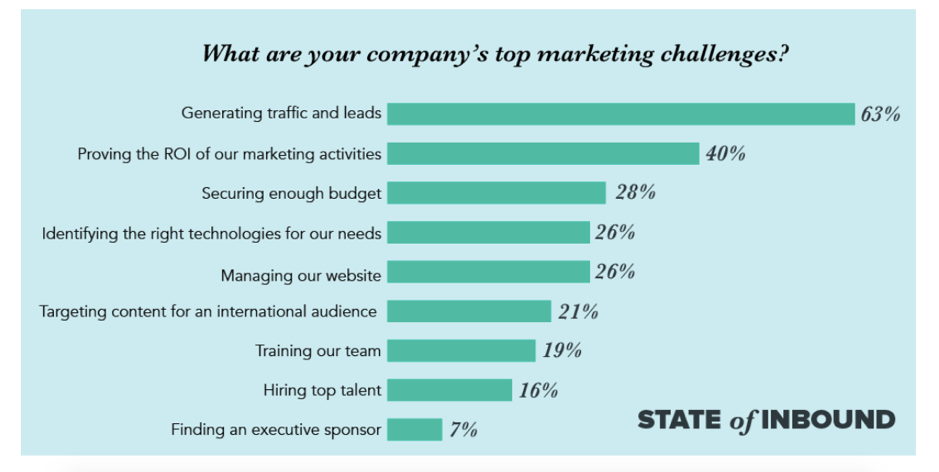Why Digital Marketing Fails (And What To Do About It) 


Is your digital marketing disappointing? It’s not uncommon for results to fall flat.
But that doesn’t mean you should settle for unsatisfactory results.
Done right, digital marketing delivers spectacular results in terms of quality leads and business growth. Take a look at the stats.
So why are some businesses getting results while others scream in frustration?
In this article, we uncover the most common reasons why digital marketing fails and how to dodge digital marketing mistakes.
Ditch These 8 Digital Marketing Mistakes
Mistake #1. Not Having a Clear Strategy
This is the number one mistake, yet many marketers and small business owners don’t realise they’re making it.
You don’t have a clear marketing plan.
The classic approach is to do a bit of this and a bit of that, measure nothing and burn through a lot of cash.
Maybe you think that a bit of SEO, occasional content posting and sporadic Facebook posts counts as a digital marketing strategy.
The worrying fact is that:
45% of marketers report having no clear strategy at all, or at least not one they could articulate.
Yet effective marketing strategies are proven to help create a digital marketing machine that brings sustained organic growth and a return on investment.
“Focus on long-term planning and forecasting by prioritising strategy over tactics. Don’t focus on being in every communication channel, focus on the ones that are most appropriate for your business and will deliver the greatest result.
Use tactics sparingly but focus on strategy.” — Jamie Black, Salted Stone
In other words, document your strategy and have a clear view of the steps you’re going to take in the future.
It’s the only way to ensure you are consistent and goals-driven with your marketing tactics.
As part of your strategy, create a realistic marketing budget. A decent budget is critical to ensure you have the resources for getting the results you need.
Mistake #2. Not Using Automation Tools
One of the biggest digital marketing mistakes is not recognising the scale of the job you’re facing.
You try to do everything yourself and end up running out of time.
Rather than pulling ahead of the competition, you’re constantly playing catch-up. As a result, you constantly miss out on opportunities to win new leads and customers.
There is a solution:
Marketing automation tools.
Did you know…
Spending on marketing automation tools is expected to reach $25.1 billion annually by 2023 (Martech Today, 2018).
Here’s why:
- Companies that automate lead management see at least a 10% increase in revenue in 6-9 months. (Strategic IC, 2017)
- 79% of top-performing companies have been using marketing automation for 3+ years. (Venture Harbour, 2017)
- Two-thirds of marketing leaders currently use a marketing automation platform. (Salesforce, 2017)
- Almost two-thirds of marketers claim to have seen the benefit of marketing automation within 6 months of implementation.
- Marketers who rely on automation generate 2X the number of leads than those who use blast emails.
The question is, which tools should you invest in?
Start with something like Zapier or HubSpot, which let you automate everything.
HubSpot is probably the best-known marketing automation software. You can access a stack of sales, marketing and customer service tools based on a central CRM.

(Source: HubSpot)
Then there are tools like Google Analytics, which provide up-to-date stats on your digital marketing performance. These are insights that you can act on to improve your campaigns and get results.
Mistake #3. You Don’t Provide Content for Every Stage of the Customer Journey
Fact: You have a marketing funnel.
Even if you don’t realise it yet, your customers go through several stages to become a customer:
-
- Awareness
- Consideration
- Purchasing
- Retention
- Advocacy
Here’s a top marketing fail that trips many people up:
Each stage of the funnel requires different content.
Let’s see how that works:
At the awareness stage, people have figured out that they have a problem and they’re looking for ways to solve it. They want to read blog posts and eBooks that help them whittle their broad questions down into something more precise.
Those at the consideration stage understand the problem and now want to find a solution. They’re looking at multiple solutions, of which you offer one. You need content that positions your solution as the best of the bunch.
At the purchasing stage, the customer is ready to buy something. The content you created for the consideration stage has established you as an option. Your purchasing pages need to offer the solution as quickly and effectively as possible.
As for retention, you’re looking at the long-term goals of the customer. You want to consistently delight them by showing that you’re supporting them and can offer services that make their lives easier. Emails, newsletters, and social media platforms all offer you the chance to engage with existing customers and personalise your interactions and content.
Finally, when you want to keep an existing customer as a loyal advocate, you need to continue to nurture the relationship. How? With engaging articles and helpful videos focusing on how to get the best from their product or service.
All of these stages fall into your wider digital marketing plan, so don’t focus on only one type of content.
Every piece of content that you create has to appeal to a specific stage of the marketing funnel.
Moreover, you have to target it to the right audience for maximum effect.
That means crafting your website content with the entire customer journey in mind.
That goes for all your digital marketing tactics.
Take paid search ads.
Consumers at different stages of the funnel use different phrases when searching for what they want. So, you need to do keyword research for each stage and target these keywords in your pay per click (PPC) strategy.
Bottom line? Know your target market and what they are searching for at each stage of the marketing funnel. It’s the only way to make sure you are serving the right content, at the right time, for maximum conversions.
Mistake #4. Failing to Promote
What do you do after creating a piece of content?
If you just put the content on your blog and wrap up, you are making one of the most common digital marketing mistakes.
Unless you already have a massively popular website, that isn’t going to cut it. The content may as well not be there at all.
Why?
Because you’re focusing on one channel and doing nothing to promote what you create.
Hitting publish is just the beginning.
To get your content seen by the right people on the right channels, you need to invest time and budget into paid, earned and owned media.

(Source: Medium)
Use social media platforms to build influence – Facebook, LinkedIn, and Twitter are all great places to share content.
But don’t just rely on organic posts.
Invest in paid social too.
According to Social Media Examiner, Facebook is the most popular paid content promotion platform used by marketers (and we’re not just talking social media marketers).
A staggering 84% of B2B marketers use Facebook ads to regularly drive traffic to their content.
Why? Because results show how it converts visitors into leads and customers.
Social media advertising is scalable and affordable – you can spend as little or as much as your digital marketing budget allows.
But by far the best thing about paid social is the incredible targeting capabilities. By getting your content in front of highly targeted audiences, you can ensure you drive conversions and get the best bang for your buck.
In the same Social Media Examiner report mentioned above, Google Ads (previously known as Adwords) came out as the second most popular paid content promotion strategy.
Again, Google Ads offers extensive research and targeting tools so you can be confident your content is reaching the right audience at the right time, while you wait for your long term organic search strategy to kick in.
Paid social and Google Ads are just two ways to promote your content. The trick is to leverage every channel you have to get your content seen by the right people at the right time.
Mistake #5. Failing to Split-Test
Data is the biggest source of truth when it comes to your digital marketing efforts.
Many people assume that their website, landing pages and paid ads are already performing to an optimal capacity.
The truth is that you should constantly test new ideas to see which work better.
That’s where split-testing comes in.
Use split testing for everything – your PPC ads, landing pages, web design, email marketing, and more.
Don’t try too many variations at once. The trick is to keep your variations simple, for example:
- Change the colour of a CTA button
- Change the placement of the CTA button
- Use different wording for headlines
- Test different images
- Different subject lines for email campaigns
Then, run both versions side by side and see which performs better by checking the data on Google Analytics.
If you find that variation B gets more engagements than variation A, you’ve just discovered a way to better optimise your page, PPC ad, or whatever you were testing.
This is what Conversion Rate Optimisation is about.
Conversion rate optimisation is an essential digital marketing tactic.
Think about it – you can always invest more budget to attract more traffic to your site.
But if you invest in converting MORE of those visitors, that’s where the real sustainable business growth lies.
Mistake #6. Failing to Keep Track of KPIs
Take a look at the top marketing challenges for companies:

Source: HubSpot 2019
See the second challenge on the list?
Proving the ROI of our marketing activities.
The truth is proving the return on investment of your marketing efforts isn’t rocket science.
You simply need to measure the right KPIs (key performance indicators) for your marketing campaigns.
You’ll have these for every aspect of the business. They’re essentially the metrics against which you measure the business’s success.
Great KPIs for online marketing include:
- Increase in organic traffic
- Number of leads that a campaign generates
- Increase in qualified leads per month
- Cost per lead
- Conversion rate
- Return on Ad Spend (ROAS)
There are plenty more that may be relevant to your business.
Despite their importance, many companies don’t even create online marketing KPIs. And some of those that do don’t check them frequently enough for them to make a difference.
Worse still, many businesses don’t really understand what they’re looking for in a digital marketing KPI.
One of the biggest digital marketing mistakes is the assumption that heaps of Page 1 results or Facebook likes means you’re doing well.
But those results mean nothing if you’re not converting people into customers.
Good KPIs include your conversion rates or the amount of shares your content receives. You’re looking to measure engagement and, ultimately, conversions.
Define your KPIs before you invest in any marketing tactics.
Make sure your KPIs are:
- Measurable and actionable
- Directly tied to your company’s core growth goals
- Measure the metrics that are most crucial to the success of the business
- Limited to less than 10 major metrics
- Applied throughout the entire business
Once you have KPIs, keep track of them.
Another top reason why digital marketing fails is because marketers don’t stay on top of the data.
Use Google Analytics to track the most important metrics, such as your conversion rate, dwell time and average time on page, bounce rate, organic search rankings and more.
Image Credit: Social Media Examiner
Measuring actions is as important as numbers, so long as you do something with what you find out.
Mistake #7. Keeping silos between channels
Digital marketing success depends on more than using each channel in isolation. Generating a killer ROI is all about integrating channels, from search to chat, display, video, email and even offline.
Take a look at what happens when you integrate PPC and email.
Did you know almost 50% of recipients open an email based solely on the subject line?
By using PPC to test the right subject lines, you can win the greatest engagement.
Now, look at social media and email.
You can use social media to drive email sign-ups.
While emails that include social media sharing buttons have a 158% higher click-through rate than emails sent without them.
What happens when you bring ALL your channels together?
At OMG, we worked with a leading fashion retailer, which had witnessed its search engine rankings collapse following a migration of its website. The brand wanted to rebuild its vanishing online presence.
So, we used the trifecta of PPC, content and SEO together.
The result?
The client’s website had seen incremental growth of more than $2 million!
Mistake #8. Giving up too early
Last but not least – don’t give up too early.
Even though many channels will start producing uplifts really quickly, it takes TIME to mature a campaign to the point where it will consistently produce a high ROI.
And ROI is always the long term goal.
Here’s our rule of thumb: success takes time.
Google Ads and Facebooks Ads often offer the quickest ROI, but still expect 3-4 months of setting up campaigns, testing, and optimising before you’ve created a well-oiled machine.
In comparison, SEO often brings in the highest ROI. However, you’ll need an average of 8-12 months to “mature” an SEO campaign. Over time, you’ll generate the highest quality and quantity of traffic you can get.
Patience is the key!
Over to you
At the end of the day, digital CAN deliver huge growth, real sales, and tangible impact when you’re onto a winning campaign. Why not skip all the hurdles and hiccups, and go straight for the proven formula?
We’ve figured out a repeatable process for high-ROI, high-revenue with digital in this guide.
Download your Digital Marketing Game Plan now!









